Archives
- By thread 5262
-
By date
- June 2021 10
- July 2021 6
- August 2021 20
- September 2021 21
- October 2021 48
- November 2021 40
- December 2021 23
- January 2022 46
- February 2022 80
- March 2022 109
- April 2022 100
- May 2022 97
- June 2022 105
- July 2022 82
- August 2022 95
- September 2022 103
- October 2022 117
- November 2022 115
- December 2022 102
- January 2023 88
- February 2023 90
- March 2023 116
- April 2023 97
- May 2023 159
- June 2023 145
- July 2023 120
- August 2023 90
- September 2023 102
- October 2023 106
- November 2023 100
- December 2023 74
- January 2024 75
- February 2024 75
- March 2024 78
- April 2024 74
- May 2024 108
- June 2024 98
- July 2024 116
- August 2024 134
- September 2024 130
- October 2024 141
- November 2024 171
- December 2024 115
- January 2025 216
- February 2025 140
- March 2025 220
- April 2025 233
- May 2025 239
- June 2025 303
- July 2025 74
-
Learn Odoo online sales
Hi
I came across your website and read about your software.
I work at Wishpond, a company that helps software development businesses find more clients and grow their reach.
We recently launched a marketing campaign for one of our clients and they saw 145 new inquiries in just 21 days.
Can we chat about how we can do the same for you?
Thanks,Riley
422 Richards St, Suite 170. Vancouver, BC V6B 2Z4
P.S. Please let me know if you don't want to hear from me again
by "Riley Nicholson" <riley.nicholson@marketingcampaignspros.co> - 01:58 - 16 Jun 2025-
Re: Learn Odoo online sales
Worth a chat?
Riley
422 Richards St, Suite 170. Vancouver, BC V6B 2Z4
P.S. Please let me know if you don't want to hear from me again-----Original Message-----
From: Riley Nicholson
To: info@learn.odoo.com
Subject: Learn Odoo online sales
Hi
I came across your website and read about your software.
I work at Wishpond, a company that helps software development businesses find more clients and grow their reach.
We recently launched a marketing campaign for one of our clients and they saw 145 new inquiries in just 21 days.
Can we chat about how we can do the same for you?
Thanks,Riley
422 Richards St, Suite 170. Vancouver, BC V6B 2Z4
P.S. Please let me know if you don't want to hear from me again
by "Riley Nicholson" <riley.nicholson@marketingcampaignspros.co> - 02:13 - 18 Jun 2025
-
-
McKinsey Quarterly Classics special issue on growth
Download the 230-page bonus issue
by "McKinsey & Company" <publishing@email.mckinsey.com> - 01:52 - 16 Jun 2025 -
Cost Reduction Techniques For Maintenance Personals (23 & 24 July 2025)
Please call 012-588 2728
email to pearl-otc@outlook.com
FACE-TO-FACE PUBLIC PROGRAM
COST REDUCTION TECHNIQUES
FOR MAINTENANCE PERSONALS
Venue : Dorsett Grand Subang Hotel, Selangor (SBL Khas / HRD Corp Claimable Course)
Date : 23 July 2025 (Wed) | 9am – 5pm By Bala
24 July 2025 (Thu) | 9am – 5pm
SYNOPSIS:
Cost plays very important role in every industry as the main life line for survival. When cost maintained at a manageable low level, the profit margin increases. When cost not controlled, profit margin shrinks. Being one of the key elements in customer requirement QCD, cost definitely plays very important role in all business.
Cost must be controlled at all levels more so a must in maintenance. Maintenance departments usually spend money on buying spare parts, tools, modifications, overtime and other minor day to day expenditures. If all this are not controlled or well spend, this can become a major concern for PQCDSM. As such maintenance personals must know and contribute to overall cost saving for their organizations.
This program, covers and discuss the key elements in maintenance waste and areas that need
attention and how they should function to save overall maintenance cost.
OBJECTIVE:
- Identify maintenance co$t structure.
- How to reduce overall breakdown co$ts.
- How to reduce utilities co$t.
- Manpower co$t reduction techniques.
- Spare parts co$t reduction techniques.
- How to invent and implement new ideas.
- Making co$t reduction as a way to life. (walk the talk)
TARGET GROUP:
- All levels of maintenance personals.
- All PM technicians.
- Equipment improvement technicians.
- Maintenance supervisors.
- Maintenance engineers.
OUTLINE OF WORKSHOP
Module 1. Introduction to maintenance cost.
- Effective maintenance as tool to achieve PQCDSM.
- Equipment cost contribution to operation.
- Elements of life cycle cost to operation.
- Why cost control becomes important.
- Maintenance personnel role in cost reduction.
- General cost distribution in maintenance.
Module 2. Breakdown cost reduction.
- Why equipments keep failing.
- 3 cultures maintenance.
- PQCDSM losses due to breakdown maintenance.
- Run to fail strategy.
- Lack of proactive maintenance.
- Failure of inspection and monitoring.
- Absence of predictive maintenance.
- Lack of poka yoke techniques.
Module 3. Utilities cost reduction.
- The unattended energy loss.
- Unaccounted electricity loss.
- Unaccounted water loss.
- Inefficient management of air-condition
- Ways to overcome utility losses.
Module 4. Manpower cost reduction.
- Direct Vs in-direct labour.
- Maintenance overhead cost variables.
- Overtime cost Vs normal pay.
- Frequent replacement lossess.
Module 5. Spare parts cost reduction.
- Where does the money for spare part came from.
- Why parts frequently fail.
- Understanding spare part criticality.
- Manage your spare parts prudently.
Module 6. Invent and implement cost reduction.
- Working on introducing high efficient light source.
- Working on reducing power factor loss.
- Work on improving auto power off.
- Work on reducing water wastage.
- Implement water conservation initiatives.
- Implement and control air-condition system.
- Develop strategies for zero breakdown.
- Implement poka yoke for fail safe misuse.
Module 7. Cost reduction as a way of life.
- Do not wait until told.
- Avoid tai chi mentality.
- Set very changeling cost reduction goals.
- Invent and innovate.
- Work as team.
- Make kaizen your daily motto.
** Certificate of attendance will be awarded for those who completed the course
ABOUT THE FACILITATOR
MR. BALACHANDRAN
Mr. Balachandran is a training consultant with over 18 years of experience in manufacturing and 23 years in training. Mr. Balachandran began his career in the Equipment Maintenance function in Motorola Malaysia and grew steadily to become an Equipment Engineer. He later took on a position as Section Head for a Production Unit which he ran for several years. He moved on to Thomson Audio Electronics in Muar as a Production Manager in 1991 where he spent 2 years. Subsequently, he assumed a position as Production Manager and then as a Training and Education Manager at Samsung Electron Devices, Seremban till 1995 and then became a full-time trainer in July 1995.
Mr. Balachandran specializes in Equipment Maintenance, Manufacturing and Training. since becoming a manufacturing trainer, he has conducted more than 700 training sessions covering more than 14,000 participants both in-house and public programs in last 23 years. He currently is one of the most prominent maintenance consultants for theoretical and subject matter expertise. He also specializes on TPM and have conducted numerous in-house trainings for the above topic. He is one of the most prominent trainer and consultant for RCM training and consultation.
His vast experience both hands-on and conceptual training makes him a valuable resource person for maintenance Development in the Manufacturing and service sector. He was also invited to speak in Universities and in Maintenance Seminar’s and also trains hospital maintenance staff.
(SBL Khas / HRD Corp Claimable Course)
TRAINING FEE
2 days Face-to-Face Public Program
RM 2,407.00/pax
(excluded 8% SST)
Group Registration: Register 3 participants from the same organization, the 4th participant is FREE.
(Buy 3 Get 1 Free) if Register before 15 July 2025.Please act fast to grab your favourite training program!
We hope you find it informative and interesting and we look forward to seeing you soon.
Please act fast to grab your favorite training program!
Please call 012-588 2728 or email to pearl-otc@outlook.com
Do forward this email to all your friends and colleagues who might be interested to attend these programs
If you would like to unsubscribe from our email list at any time, please simply reply to the e-mail and type Unsubscribe in the subject area.
We will remove your name from the list and you will not receive any additional e-mail
Thanks
Regards
Pearl
by "pearl@otcsb.com.my" <pearl@otcsb.com.my> - 01:32 - 16 Jun 2025 -
LAST CALL !!! Basic Engineering & Technical Knowledge For Troubleshooting Of Industrial Machine Circuit Faulty (16 & 17 July 2025)
Please call 012-588 2728
email to pearl-otc@outlook.com
PUBLIC PROGRAM
BASIC ENGINEERING & TECHNICAL KNOWLEDGE FOR
TROUBLESHOOTING OF INDUSTRIAL MACHINE CIRCUIT FAULTY
Venue : AC Hotel by Marriott, Penang (SBL Khas / HRD Corp Claimable Course)
Date : 16 July 2025 (Wed) | 9am – 5pm By Ambrose
17 July 2025 (Thu) | 9am – 5pm . .
OVERVIEW:
In manufacturing industry , most of the Industrial machine using electrical system, electronic system , electro-mechanical system and electro-pneumatic system to operate the machine and generates the desire output according to production required. To ensure an effectiveness of support service to production or manufacture department, the technicians and engineers shall have the basic knowledge to checking, verify and perform troubleshooting of Industrial machine faulty.
OTC Training Centre Sdn Bhd provides the Technical Training program to enhance Engineers and Technicians knowledge, skill and technique related to Industrial machine repair. Basic engineering and Technical Knowledge for Troubleshooting of Industrial Machine Circuit Faulty (2 Days program) contents:
a) Theory/Quiz - Basic knowledge for engineering system - electrical, electronic and electro- mechanical system.
b) Theory/Quiz- Basic block diagram of electrical machine
c) Theory/Quiz - Basic wiring diagram of electrical system single & 3 phase
d) Theory/Quiz - Basic component specification and Circuit function - Power Devices, Sensor , Control Devices and Output Devices
e) Safety Guide - Safety Precaution & Guideline for Troubleshooting of Electrical machine
f) Practical 1 - Application of Multimeters – Testing components and measurement technique.
g) Practical 2- Testing, generate test point and measurement technique
h) Practical 3- Perform electrical wiring and measurement technique of current and voltage.
i) Practical 3- Circuit analysis - Electrical machine common problems, testing and verification technique.
j) Practical 4- Wiring , Testing and Verification status of Electrical machine assembly:
- AC Supply / AC Filter / Switching Mode Power Supply / DC Motor
- AC Supply / Solid state Relay / Battery / AC Bulb
- AC Supply / Inverter Motor / AC Motor
k) Practical 5 - Electrical Component Testing and Verification Technique.
- AC Filter / Switching Power Supply/ Main Circuit Breaker / ELCB
- Magnetic Contactor / AC Relay /AC Valve/AC Motor / DC Motor / Heater
- Electronic components – Fuse / Passive component/ diodes / Transistors
WHO MUST ATTEND:
Basic Engineering and Technical Knowledge for Troubleshooting of Industrial Machine Circuit Faulty suitable for engineers and technicians working at:
- Equipment Repair Centre
- Maintenance Department
- Production Department
- Service department
- University / college
- Equipment Supplier
- Telecommunication Industry
- Healthcare Industry
OUTLINE OF WORKSHOP
1. Introduction to Basic Engineering & Technical knowledge for Troubleshooting of Industrial machine circuit faulty
- Self rate skill & knowledge for troubleshooting of industrial machine
- List down common machine problem in your area / production
2. Basic knowledge for engineering system
- Electrical system
- Electronic system
- Electro mechanical system
- Electro pneumatic system
3. Understanding Basic block diagram of industrial machine
- Basic design of electrical machine
Generates basic block diagram of
- Machine with Single Phase Motor
- Machine with 3 Phase Motor
- Machine with Heater Assembly
4. Basic wiring diagram of industrial machine
a) Single phase system
b) 3 phase – Star wiring
c) 3 phase – delta wiring
d) PLC System / Ladder Diagram
5. Basic Components / devices Identification, specification and basic function .
a) Power Section
- Single Phase AC Supply / 3 Phase AC Supply
- Main Circuit Breaker / ELCB ( RCC)
- Switch Mode Power Supply (SMPS)
- Battery Assembly/ UPS
b) Sensors
c) Control Section
- Micro controller (PIC)
- PLC System
- Inverter Motor Controller
- Relay/ Solid state relay
d) Output Section
- Single Phase AC Motor
- 3 Phase AC Motor
- Heater Assembly
6. Practical 1
Generate test point and measurement technique based on Wiring Diagram A
a) Generate test point for voltage measurement
b) Identify High Pin (Red Probe) and Low Pin (Black Probe) for each measurement.
7. Safety Precaution & Guideline for Troubleshooting of industrial machine
8. Practical 2
Application of Test equipment
a) Digital Multimeter
- Continuity Test / Resistance Test / Short & Open Test
- Capacitance Test / Diode Test
- Measurement Voltage
9. Practical 3
Perform Electrical wiring and measurement technique based on Electrical Diagram B
a) Measurement of voltage & data collection
b) Measurement of current & data collection
10. Practical 4
Industrial machine Common Problems and Component faults.
a) Single Phase with 7 AC Motors
b) AC DC Power Supply
c) Micro controller not function
d) Inverter Motor not function
e) Heater Assembly not function
11. Practical 5
Wiring , Testing and Verification circuit function of Industrial machine System
a) Project 1
- AC Supply /AC Filter / Switching Power Supply /DC Motor
b) Project 2
- AC Supply / Solid state Relay / Switch / Battery /AC Bulb
c) Project 3
- AC Supply / AC Filter /Inverter Motor / AC Motor
12. Practical 6
Electrical Component Testing and Verification Technique.
a) Main Circuit Breaker / ELCB
b) Magnetic Contactor / AC Relay/ Basic Controller
c) AC Filter / AC Motor / Stepper Motor
d) Electronic components
13. Reference
** Certificate of attendance will be awarded for those who completed the course
ABOUT THE FACILITATOR
Ambrose is a highly qualified sought technical trainer in the areas of AUTOMATION AND MAINTENANCE COST REDUCTION. His believe is to have Continuous Training with cost consciousness in mind when imparting knowledge and technical “KNOW-HOW towards obtaining Quality Excellence.
Early years of his career, he was involved in Palm Oil refinery, Production and Manufacturing activities from Semiconductors Environment to Food Manufacture. Understand manufacturing requirements and well verse of production continuous improvement thru education.
Majoring in Hydraulic and Pneumatic Technology from Mannesmann Rexroth Germany, he extended his knowledge in to writing Mechatronic Syllabus for organisation for Training and Development, and has become a Reputable Trainer for Automation & Automation Process improvement for the Manufacturing Industries here .
AMBROSE started his career 35 years in which the 1st 15 years was involved in the field of Manufacturing Improvement and the rest was Training and Development. In this 20 years Mr.Ambrose has travelled the South East Asia to conduct Technical Training to Palm Oil refinery in Sumatera to steel plants in Thailand. Today he is here concentrating on training in Automation to meet IR 4.0 requirements.
Training And Development 1985 to 2020
Set up and develop HVAC system training for students from TAR college for Mainzone (M) Sdn Bhd . ( Contractors for RADICARE – maintenance of HVAC for Hospital Kuala Lumpur )
Early years of his career, he was involved in Palm Oil refinery, Production and Manufacturing activities from Semiconductors Environment to Food Manufacture. Understand manufacturing requirements and well verse of production continuous improvement thru education.
With his management experience, he has used it in setting up and managed Technical Education Training Centers for industries and also the Malaysian Fuel Training Academy .As an Project Manager his primary role was to manage and coordinate the implementation of various project activities in ensuring quality and timeliness of activities and delivery of outputs.
Competencies in planning, program development, training needs and Human Capital Retention Management Program. Excellent written and spoken English, in the use of the computer and several applications, excellent interpersonal skills and communicate well with people. I have worked in a cross- cultural setting throughout his career.
As a Technical Training Consultant he, was able to educate Maintenance Technician and machine Operators from the manufacturing sectors to have a better approach towards handling Equipment and Machine Maintenance, in accordance with Increasing Productivity and Reducing Machine downtime while Instilling Cost Consciousness, Continuous Improvement and Creating Ownership at work place, this includes training .
Ambrose started his carrier with giant German MNC as at technician. Being a senior technician, he was managing his subordinates to be able to produce up to the management’s expectations and at the same time, provide quality service to upgrade the organization’s service. Having gained his credentials in the technical arena, he then joined a Malaysian-American joint venture organization manufacturing semi- conductors. He became the head of department and had since trained both lecturers and students on engineering aspects such as calibration, validation, hydraulics and pneumatics, etc. He is an academician indeed whereby he often contributes articles to the local newspaper and other engineering magazines.
At this company, the trainer was overseeing the production process In early 2004, Ambrose was appointed as a Technical Consultant for the prestigious Melaka Industrial Skill Development Centre (MISDC). Here, he was engaged in developing technical training programs and identify areas of improvement for the institution. Some of the programs that he has developed and delivered include “Industrial Automation Technology”, “Executive /Engineers Development Programs”, Mechatronics, HACCP, Calibration, Total Quality Management, Good Manufacturing Practice.
Mr.Ambrose has earned the below certification in his early years .
- Diploma in Business Administration London College of Management
- Diploma in Electrical Technician Course, Institute Technology Negri Sembilan, Certificate in Hydraulic and Pneumatic, Lohr Germany,
- Certificate in Environmental and Pollution Control Management, Japan, Certificate in International Trade logistic and supply Chain Management. Japan Certificate in Marine Petroleum Inspector (Bunker Operations)2012
- Certificate in Marine Petroleum Inspector Career Pathway and Authority Requirements 2012 Implementation of Certification thru Recognition Prior Learning Process by Human Resources Ministry
- Certified Trainer by HRDF 2007
- Association of Overseas Technical Scholarship (AOTS) Japan member 2004 -2007 Malaysian International Chambers of Commerce and Industry member 2001- 2007
Today Mr. Ambrose is involved in continuous improvement thru technical Training to organization who requires his expertise.
(SBL Khas / HRD Corp Claimable Course)
TRAINING FEE
2 days Face-to-Face Public Program
RM 2,250.00/pax
(excluded 8% SST)
Group Registration: Register 3 participants from the same organization, the 4th participant is FREE.
(Buy 3 Get 1 Free) if Register before 8 July 2025.Please act fast to grab your favourite training program!
We hope you find it informative and interesting and we look forward to seeing you soon.
Please act fast to grab your favorite training program!
Please call 012-588 2728 or email to pearl-otc@outlook.com
Do forward this email to all your friends and colleagues who might be interested to attend these programs
If you would like to unsubscribe from our email list at any time, please simply reply to the e-mail and type Unsubscribe in the subject area.
We will remove your name from the list and you will not receive any additional e-mail
Thanks
Regards
Pearl
by "pearl@otcmarketing.com.my" <pearl@otcmarketing.com.my> - 10:33 - 16 Jun 2025 -
Pump up your business-building muscles: A leader’s guide
Leading Off
Venture to grow 




Brought to you by Alex Panas, global leader of industries, & Axel Karlsson, global leader of functional practices and growth platforms
Welcome to the latest edition of Leading Off. We hope you find our insights useful. Let us know what you think at Alex_Panas@McKinsey.com and Axel_Karlsson@McKinsey.com.
—Alex and Axel
Leading an organization can feel a lot like working out at the gym: You build the muscles that are most important for reaching your goals. But which ones could use a little more training? Increasingly, leaders are focusing on developing their business-building strengths to help push their organizations forward. Companies can attract more customers, generate more revenue, and achieve higher organic growth by creating new products, divisions, spinouts, or joint ventures. This week, we look at some lessons leaders can learn from organizations that have succeeded in launching and scaling new businesses.
The more often that companies create new businesses, the better they get at doing it. To build those muscles, McKinsey’s Jorge Grieve, Nimal Manuel, Timothy Yap, and Vivek Lath recommend that organizations create a new-venture factory (NVF), a specialized unit designed to support business building and speed up innovation and growth. Companies that have flourished in launching multiple ventures use an NVF to incubate ideas by bringing together key resources: for example, technical and data assets and experts in business building and operations. An NVF can also help sustain success with new ventures by tapping into the parent company’s strengths—including leaders, data, and products—and by developing smart business portfolio strategies. “Getting the full value from building multiple businesses requires the NVF to have portfolio management skills,” the authors say. “In this way, the corporation not only increases the chances of overall success by distributing risk but also creates a central point for managing decisions and allocating funds for the maximum benefit of the business.”
That’s the share of CEOs who say that business building is one of their top three strategic priorities, according to a McKinsey Global Survey of more than 1,110 executives. The survey results show that companies benefit from experience in business building, note McKinsey’s Belkis Vasquez-McCall, Daniel Aminetzah, Markus Berger-de León, Paul Jenkins, and Shaun Collins. Expert builders are about twice as likely as novice builders to succeed with their new ventures—and, on average, they record 12 times more revenue than novices do in a new business’s fifth year.
That’s McKinsey’s Markus Berger-de León, Ralf Dreischmeier, Paul Jenkins, and Maria Ocampo on why culture building should be a critical part of launching new ventures. The authors note that 26 percent of failed corporate start-ups are linked to cultural issues. They identify three steps that companies can take to help avoid such a fate: defining core beliefs, focusing on the right leadership fit, and ensuring that leaders model positive behavior. “Just like larger companies, corporate ventures with healthy cultures can outperform those that do not have it,” the authors say.
In new ventures, early setbacks can become launching pads for growth. For sennder, a European digital road-freight-forwarding company founded in 2015, one such obstacle inspired the company to move beyond its start-up mentality. In an interview with McKinsey’s Max Flötotto and Tobias Henz, cofounder and CEO David Nothacker recalls that sennder initially processed its invoices manually, which created delays that could potentially harm customer relationships. In addressing that issue, he realized that he could not solve every problem himself. Rather, he needed to improve decision-making and role clarity within the leadership team. “Challenges like these have been catalysts for our growth,” Nothacker says. “Each one has forced us to adapt quickly, streamline our processes, and implement stronger corporate governance. Today, we’re more agile and resilient because of those early experiences.”
Life sciences companies have long viewed healthcare providers and payers—rather than patients—as their key customers. But that strategy is changing. With consumer health apps growing more and more popular, pharmaceutical, biotech, and medtech companies are launching digital consumer tools for health issues ranging from dietary changes to menopause. Many of these companies are also struggling with these new ventures, observe Senior Partners Arun Arora and Jake Henry and their coauthors. “Launching a new business is never easy; it takes a huge amount of strategic planning and execution,” they say. “And the process is doubly hard in life sciences, where new ventures can fail due to regulatory complexities, talent acquisition issues, and lackluster go-to-market strategies.” The authors outline five main pitfalls for life sciences CEOs to avoid when building patient-centric businesses. Among them are relying too heavily on in-house regulatory and compliance expertise, moving too slowly to develop and launch new products, and depending on healthcare providers to drive sales.
Lead by bringing new businesses to life.
— Edited by Eric Quiñones, senior editor, New Jersey
Share these insights
Did you enjoy this newsletter? Forward it to colleagues and friends so they can subscribe too. Was this issue forwarded to you? Sign up for it and sample our 40+ other free email subscriptions here.
This email contains information about McKinsey’s research, insights, services, or events. By opening our emails or clicking on links, you agree to our use of cookies and web tracking technology. For more information on how we use and protect your information, please review our privacy policy.
You received this email because you subscribed to the Leading Off newsletter.
Copyright © 2025 | McKinsey & Company, 3 World Trade Center, 175 Greenwich Street, New York, NY 10007
by "McKinsey Leading Off" <publishing@email.mckinsey.com> - 04:35 - 16 Jun 2025 -
Managing yourself: How to give feedback
Performance review season is approaching Email 3 of 7
How to give feedback
In the previous session, we looked at how individuals and organizations can develop their learning muscle. In this email, we’ll explore the art of perfecting feedback.
“If you approach [a difficult] conversation with a mindset that you’re bringing them a new perspective, you’re giving them a new view on the world ... it really can be something that is a gift to another person, and it is going to help them become a more effective manager or leader,” says Liz Hilton Segel, McKinsey’s chief client officer. Feedback is crucial to employee development and growth, but delivering it—and receiving it—isn’t always easy. These five key learnings will enable you to enhance team dynamics, navigate difficult conversations, and unleash employees’ full potential.
This email contains information about McKinsey’s research, insights, services, or events. By opening our emails or clicking on links, you agree to our use of cookies and web tracking technology. For more information on how we use and protect your information, please review our privacy policy.
You received this email because you subscribed to “The McKinsey Publishing Guide to managing yourself and others.”
Copyright © 2025 | McKinsey & Company, 3 World Trade Center, 175 Greenwich Street, New York, NY 10007
by "McKinsey Publishing Guides" <publishing@email.mckinsey.com> - 03:05 - 16 Jun 2025 -
Preparing for the future of foreign aid
On McKinsey Perspectives
4 strategic levers 




Brought to you by Alex Panas, global leader of industries, & Axel Karlsson, global leader of functional practices and growth platforms
Welcome to the latest edition of Only McKinsey Perspectives. We hope you find our insights useful. Let us know what you think at Alex_Panas@McKinsey.com and Axel_Karlsson@McKinsey.com.
—Alex and Axel
•
A generational shift. Global donors’ recent announcements about foreign aid reductions signal major changes in how development-related programs are funded and organized, McKinsey Senior Partner Adam Sabow and coauthors explain. McKinsey analysis suggests that stated official-development-assistance reductions until mid-April 2025 are equivalent to a decrease of $41 billion to $60 billion relative to 2023; in other words, a 15 to 22% decline. This acute change comes amid foreign aid volumes that were already declining in the years before the COVID-19 pandemic.
—Edited by Belinda Yu, editor, Atlanta
This email contains information about McKinsey's research, insights, services, or events. By opening our emails or clicking on links, you agree to our use of cookies and web tracking technology. For more information on how we use and protect your information, please review our privacy policy.
You received this email because you subscribed to the Only McKinsey Perspectives newsletter, formerly known as Only McKinsey.
Copyright © 2025 | McKinsey & Company, 3 World Trade Center, 175 Greenwich Street, New York, NY 10007
by "Only McKinsey Perspectives" <publishing@email.mckinsey.com> - 01:47 - 16 Jun 2025 -
Looking for cheap and cheerful construction machineries ?
Dear Info,
Hope this message finds you well.
I'm Jenny, working at ZhongQiang company from China.
Our company owns over 300 units of used tower crane, and construction hoists. With more than 17 years experience in this industry, we win good reputation by our prefessional service and high quality equipment.
Currently our clients are not only in China, but also in the Middle East, Central Asia, Southeast Asia and Russia.
Let's talk further more about what you need.
Best regards,
Jenny Zhong
Director of Sales
Huai'an Zhongqiang International Trading Co., Ltd
Address: Wenzhou Industrial Park, Qianjiang Road, Huai'an City, Jiangsu Province, China
 mobile phone /
mobile phone /  whatsApp /
whatsApp /  wechat : +86 19851778351
wechat : +86 19851778351? email: 8@zqtowercrane.com
website: www.zqusedtowercrane.com


by "Loris Pololo" <lorispololo@gmail.com> - 03:39 - 15 Jun 2025 -
Tender Invitation | Proposed G+1 (Al Hussaini Villa) Private Villa on Plot Number 2624683
Greetings from General Construction Co. L.L.C!Attn: Tenderers,
On behalf of our client, we are pleased to invite you to submit your best competitive price for the below project:
Project Name: Proposed G+1 (Al Hussaini Villa) Private Villa on Plot Number 2624683
Client: Al Ayan Real Estate Broker LLC
Location: Al Mizhar First, Dubai, United Arab Emirates
Please refer to link below to download Tender Package:
Download Link: All Tender Documents
We fully believe that the information provided are sufficient in order to have a best Tender offer.
If you need any clarifications or assistance, please don’t hesitate to contact us.
Please confirm receipt of this email.
Should you require further assistance or clarification, please feel free to reach out.
Thank you and Best regards,
Abigail Arcilla
Document Controller
GENERAL CONSTRUCTION C0. LLC
Phone: +971 4 280 6898 | Fax: +971 4 280 6201
Email: tender@gccuae.com | Web: https://gccuae.com
8th Floor, Al Mezan Building, Muhaisnah 4, P.O. Box 30639 Dubai, UAE.
by "Greetings from General Construction Co. L.L.C" <anish.sales@a2zqatar.net> - 02:01 - 15 Jun 2025 -
May I share a quote?
Hi,
Good morning!
I noticed a few areas on your website that could be improved. I’d be happy to share a detailed analysis with you, outlining specific changes that could help enhance your online presence.
Would you be open to receiving a customized report along with a brief recommendation?
Thank you
by "Ashley Hill" <ashleyhill038@hotmail.com> - 11:46 - 15 Jun 2025 -
Explore Alibaba's top PVC Pipe & Channel solutions!
Hi, Info ,
Good Day!
As one of the star company at alibaba.com we re sure you will like our quality so much. Fully hope we have a chance to serve you. If you happen to be interested in our products. You can visit our Alibaba store and website to see our products. We welcome you to watch.
If you want to buy, we can recommend local hot products to you. We are familiar with your market. Our annual output capacity reach 500 containers which are exported to Europe, South America, South Africa, Southeast Asia, Middle East, Africa...Etc.
Would you like to have a look?

by "Jungkook Bonferraro" <jungkookbonferraro@gmail.com> - 11:43 - 15 Jun 2025 -
Warm Up for Your Golf Holiday with FREE Rounds at Top UK Courses
Your golf experience starts the moment you book... Hello Sir/Madam,
Did you know you can play for free at some of the most prestigious courses in the UK before you head off on your golf holiday?
At VIP Golf Concierge, your golf experience starts the moment you book. That’s why we’re offering our valued clients exclusive monthly free rounds at renowned venues such as The Belfry, The Shire, Close House, Celtic Manor, and more.
Why does this matter for you?
- Sharpen your skills and perfect your swing before your overseas trip
- Experience championship-level courses in the UK - at no extra cost
- Enjoy our trademark VIP service from day one
- However, our free four-ball slots are limited each month. Prioritised for VIP clients, these spots fill up swiftly, so book your holiday now to secure your warm-up sessions before they’re gone.
Simply reply to this email or call us on +44(0)7492 189 785 to reserve your place.
See you on the first tee!
Best regards,
Samantha Taylor
Tour Leader
+44(0)7492 189 785


by "Samantha - VIP Golf Concierge" <info@vipgolfbookings.co.uk> - 02:45 - 15 Jun 2025 -
Finance For Non Finance Professionals (26 & 27 August 2025)
Please call 012-588 2728
email to pearl-otc@outlook.com
HYBRID PUBLIC PROGRAM
FINANCE FOR NON FINANCE PROFESSIONALS
(** Choose either Zoom OR Physical Session)
Remote Online Training (Via Zoom) &
Wyndham Grand Bangsar Kuala Lumpur Hotel (Physical)
(SBL Khas / HRD Corp Claimable Course)
Date : 26 Aug 2025 (Tue) | 9am – 5pm By Joyce
27 Aug 2025 (Wed) | 9am – 5pm . .
OVERVIEW
In today’s changing business conditions and intense competition, there is a need for all functional or business heads to grasp, understand and apply fundamentals of financial accounting knowledge in respective areas or business units to be all rounded professional managers. Moving forward, most functional and business managers are expected are deemed ‘owners’ of the profit & loss numbers!
By acquiring this skill, this will enable them to better understand and analyses financials statements, contribute effectively in the budgeting process and makes effective decision in investment and project selection. This programme will highlight methods used by finance function which are relevant today for management decision support.
Who should attend: Professionals, Senior Managers, Managers, Executives who had no formal training in accounting & finance but wish to understand and interpret financial statements and enhance financial management & budget setting process.
OBJECTIVES
On completion of the programme, participants will be able to:-
- Master the interpretation of financial statements
- Identify key financial concerns via variance analysis for financial sector products.
- Know how to analyse and evaluate key financial indicators in view to contribute towards improving organisation’s performance
- Understand the concepts, language and basic rules of accounting & finance.
- Equip oneself with knowledge in order to effectively manage a business organization.
TRAINING APPROACH
Where appropriate, activities will include the following:
· Lecture & Videos
· Faciliated Group Discussions & Quiz
· Practical exercises and case studies
DURATION
2 Days (9.00 am – 5.00 pm)
OUTLINE OF WORKSHOP
DAY 1
1. Introduction to Finance Accounting & Finance Analysis
2. Building Financial Knowledge:
- Financial Terminology
- Practical understanding of practical finance and accounting concepts
3. Understanding financial statements
- Types of financial statements: Profit & Loss, Cash Flow, Balance Sheet & its importance and usefulness
- Evaluation business performance and viability through:
· Margin analysis
· Return of Investment (ROI), Gearing (leverage) & liquidity ratios
- Learn the golden rule of financial management (personal & company finance)
· Working capital management
· Why rich companies get richer?
· Cash versus profit measures
4. Management reporting: Variance Analysis
- Understanding essentials of variance analysis & how variances are calculated.
- What causes budget variances?
DAY 2
5. Budget process
- Overview of Top Down and Bottoms Up budgeting and forecasting process & methodologies with simple practical exercises.
- Importance of assumptions and SWOT analysis for budget setting exercise.
- Identify which cost element which are difficult to forecast
- Capital Expenditure and Revenue Expenditure Concepts.
6. Understanding budget via understanding of cost
- Cost element classification
- Value Costing
- Costing methods and structure
- Identify firm’s Cost drivers
- Different types of cost – fixed, variable
- Breakeven and contribution analysis
7. Cash Flow Statement & Management
- Ten Tips for Managing Cash Flow for Companies
- Understanding operating cash flow by work capital management
- Working Capital Management definition and its importance in cash flow management
- Managing company inventories for enhancing cash liquidity
- Understanding Cash Flow Statement Components for forecasting
- Sample CF format case study interpretation.
** Certificate of attendance will be awarded for those who completed the course
ABOUT THE FACILITATOR
JOYCE
- Chartered Accountant, Fellow ACCA UK (Year 2008) and MIA (Year 2003)
- Certified Train the Trainer (TTT), PSMB, 2015 No: 13320
- Certified Neuro Linguistic Programme (NLP) Practitioner & Certified TimeLine Therapy NLP Coach, 2017 (ABNLP) & Licensed Hypnotherapist (Association of Hypnotherapy Practitioners Malaysia AHPM 2017)
- Certified Change Management Practitioner (PROSCI USA – 2017)
Joyce is a Fellow Member of Chartered Association of Certified Accountants (ACCA), United Kingdom (UK) and a Chartered Accountant member of Malaysia Institute of Accountants (MIA). Her career began in one of the largest Malaysia conglomerate, Berjaya Group of Companies in role of a group financial accountant. She then moved into telecommunications (Maxis Communications, Nokia Networks) and ICT industry (IBM Malaysia) in various roles in management, business & operational finance, finance analysis, planning & budgeting. Since year 2012 & beyond, she was headhunted to join one of the established regional and global FMCG food/beverage, finance tech and recently, Avon, a global cosmetics single and multi -level marketing industry in a senior commercial finance leadership role.
Her interest in training and facilitation began in Nokia Networks Malaysia when she was requested to train business managers the essentials of finance analysis, Sarbannes Oxley (SOX) compliance requirements and interpretation of financials.
Due to passion and interest in public speaking, training and development she was the Past President of Malaysian Insititute of Human Resource Management (MIHRM) Toastmasters Club in year 2007-2008. She successfully obtained Advance Communication Bronze, Advanced Communication Silver (ACB, ACS) and Competent Leader (CL) communication awards from Toastmasters International, USA. In addition, she was Past President of Rotaract Club of Port Klang Centennial, part of Rotary International Organisation.
What you can expect from Joyce is the ability to explain some how complex financial concepts in layman’s terms. Plus point is her vast experience in business, finance, accounting & people management gained in Malaysia PLCs and global multi-national companies will enriches participants’ knowledge and increases their aptitude for appreciating the intricate subject of Finance and Management. She also familiar with training of junior accountants in shared services accounting function environment due to exposure in IBM Malaysia in shared services regional accounting & finance center.
She has conducted various programs such as:
- Finance for Non Finance Personnel & Managers
- Use of Financial Information for Strategic Cost Management
- Effective Financial Management.
- Effective Credit Control Management and Processes
- Business Accounting & Accounting Functions
- Budgeting & Strategic Planning
- Financial Wellness & Literacy Workshop: Money and Me programmes.
- Accounting standards workshop and training
The list of clients who had benefitted from her expertise were:
- PMI Industries Sdn Bhd, & Mackenzie Industries (subsidiaries of Wah Seong Group)
- Star Media Radio Group of Companies
- MyWIN Academy Berhad (Prime Minister’s Department)
- Wah Seong Group Corporation Berhad
- Clipsal Manufacturing (Schneider Electric)
- Bintulu Development Authority (BDA)
- Sudong (subsidiary company of Singtel Telecommunications Inc) Malacca & Klang
- UMW Corporation Berhad SL1M programmes
- Gentpac Malaysia (Shared Services Accounting and Finance Center)
- UEM Edgenta Malaysia Berhad
- Construction Industrial Development Berhad (CIDB)
- Malaysian Communications and Multimedia Commission (MCMC)
- Amway Malaysia Holdings Berhad
- Salcon Engineering Berhad
- Malakoff Corporation Berhad (MCB) and subsidiaries.
- Human Resource Development Fund (HRDF) Finance Public Programmes: PENJANA for Small & Medium Size (SME)
(SBL Khas / HRD Corp Claimable Course)
training Fee
14 hours Remote Online Training (Via Zoom)
RM 1,296.00/pax (excluded 8% SST)
2 days Face-to-Face Training (Physical Training at Hotel)
RM 1,900.00/pax (excluded 8% SST)
Group Registration: Register 3 participants from the same organization, the 4th participant is FREE.
(Buy 3 Get 1 Free) if Register before 19 Aug 2025. Please act fast to grab your favorite training program!We hope you find it informative and interesting and we look forward to seeing you soon.
Please act fast to grab your favorite training program!
Please call 012-588 2728 or email to pearl-otc@outlook.com
Do forward this email to all your friends and colleagues who might be interested to attend these programs
If you would like to unsubscribe from our email list at any time, please simply reply to the e-mail and type Unsubscribe in the subject area.
We will remove your name from the list and you will not receive any additional e-mail
Thanks
Regards
Pearl
by "sump@otcmsb.com.my" <sump@otcmsb.com.my> - 02:26 - 15 Jun 2025 -
Overcome Your LED Lighting Obstacles
Dear Info,
At FREE LIGHTING, we don’t just manufacture LED bulbs—we solve lighting challenges. Our patented G9 ceramic series has addressed issues like low lumens, poor color performance, and high decay rates.
What you can expect from us:
- **Solutions for Tough Environments**: Suitable for enclosed fixtures and damp locations.
- **Proven Longevity**: Tested to exceed 10,000 hours with consistent performance.
- **Wide Selection**: Over 461 unique LED designs to meet various needs.

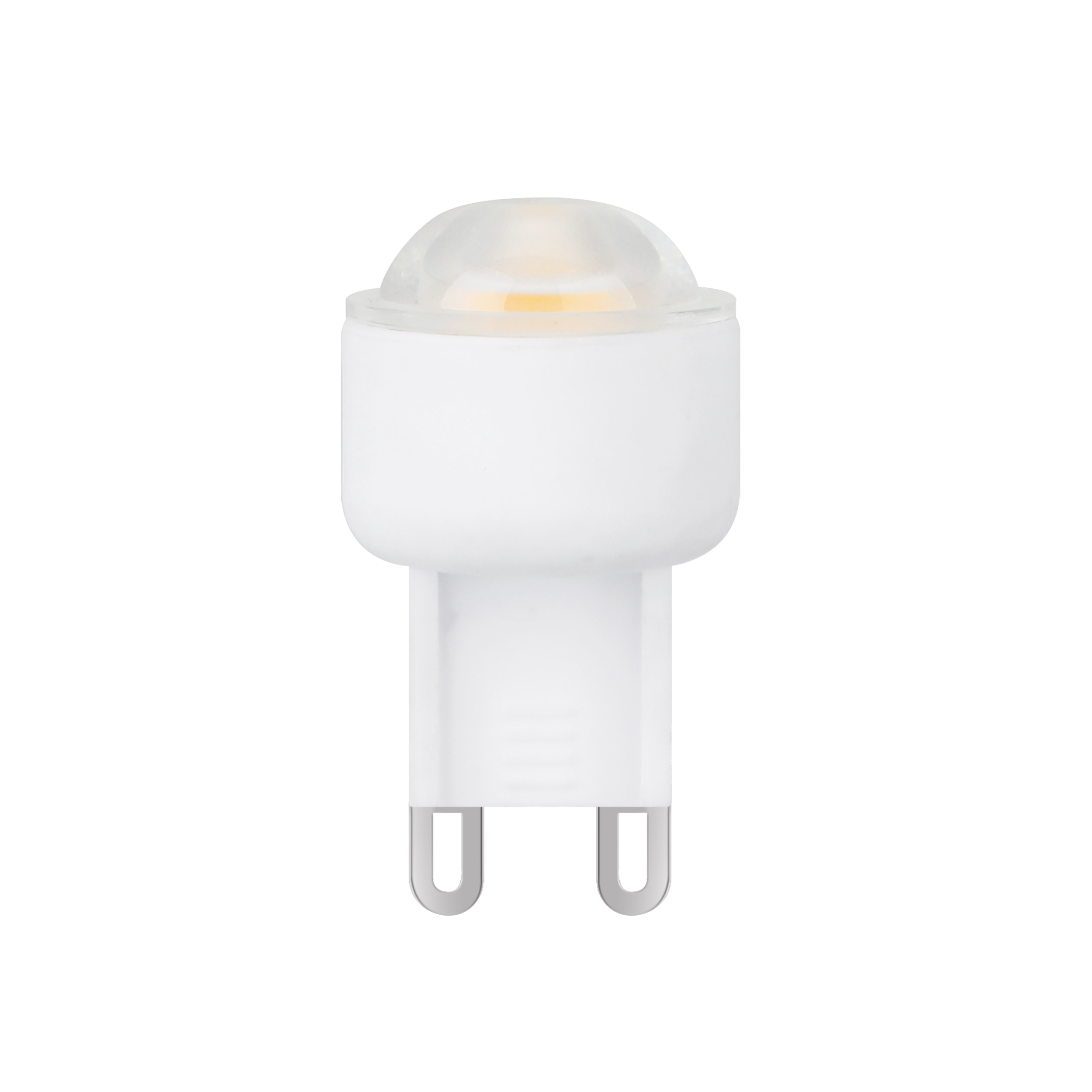

If reliability and innovation matter to your projects, let’s connect. Visit www.freelightingled.com to learn more.
Best regards,
Vicky Hong
FREE LIGHTING
+86-13924663803
vicky@freelightingled.com
B4, Tieta Industrial Park, Hedi Rd, Gongming Town, Guangming Dist.,518106 Shenzhen, China
by "Rosenberger Schwarzbauer" <rosenbergerschwarzbauer493@gmail.com> - 05:15 - 14 Jun 2025 -
The week in charts
The Week in Charts
Foreign aid programs, tariff concerns, and more 




Share these insights
Did you enjoy this newsletter? Forward it to colleagues and friends so they can subscribe too. Was this issue forwarded to you? Sign up for it and sample our 40+ other free email subscriptions here.
This email contains information about McKinsey's research, insights, services, or events. By opening our emails or clicking on links, you agree to our use of cookies and web tracking technology. For more information on how we use and protect your information, please review our privacy policy.
You received this email because you subscribed to The Week in Charts newsletter.
Copyright © 2025 | McKinsey & Company, 3 World Trade Center, 175 Greenwich Street, New York, NY 10007
by "McKinsey Week in Charts" <publishing@email.mckinsey.com> - 03:46 - 14 Jun 2025 -
Increase your camera CCTV revenue with high-quality Ethernet switch and PoE switch!
Hi! Info,
Good day!
We are a professional manufacturer of Ethernet switches. Here are some advantages about us:
Highlights: Monitor multiple devices; ensure network stability; solving device crashes
Revenue: Increase sales through new Ethernet Switch products.
Quality: The durable aluminum casing and component materials make Ethernet switches more durable and suitable for all complex environments.
Price: Offer lower prices and better quality for the same product
After-sales service: Support free warranty service during the warranty period to solve your worries.
Reply 'Yes, I am interested' for more information, so that we can provide you with professional consulting services.
Warm regards,
Sales department of HZGWS Technologies Co., Ltd.
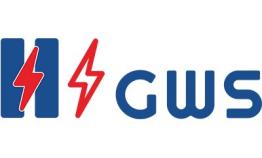 HZGWS Technology Co., Ltd.
HZGWS Technology Co., Ltd.Contact us:
Website: www.hzgws.com
Alibaba: https://hzgws.en.alibaba.com/
Facebook: https://www.facebook.com/profile.php?id=100083940985478
Email: hzgws@hzgws.com
WeChat: HZGWS--PoE
by "Mohrbacher Bousman" <bousmanmohrbacher@gmail.com> - 02:35 - 14 Jun 2025 -
Understanding of Requirements of the Medical Device Regulation 2017/745 (MDR) - 1 Day Program
email to pearl-otc@outlook.com
UNDERSTANDING OF REQUIREMENTS OF THE MEDICAL DEVICE REGULATION 2017/745 (MDR)
This program can be specially tailored and customized to meet your training objectives
Kindly find above attached for the full brochure for this programs
We hope you find it informative and interesting and we look forward to seeing you soon
(SBL KHAS / HRD CORP Claimable Course)
1 Day In-House Program By Khairun
OUTLINE
Regulation will affect all medical device manufacturers, importers, distributors and EU Representatives. Subcontractors/suppliers will also be affected, as well as manufacturers of some devices without a medical purpose (for example, devices used for esthetical body modification, contact lenses to change eye colour without correcting vision, etc.).
Among the aspects changed are the classification of products, previous basic requirements, technical documentation, clinical evidence, market surveillance, and quality management systems. The European approval process is uniformly regulated and entails significant changes in terms of organization goals. The new scrutiny procedure, reprocessing requirements, and the introduction of the European database Eudamed also bring about profound changes. In our one-day seminar, you will gain a compact overview to align your company with the new requirements of the Medical Device Regulation (MDR).
OBJECTIVES:
The training provides:
- Overview of the EU MDR 2017/745
- The requirements of EU MDR 2017/745 and other relevant guidance documents
- Working knowledge in application of the requirements
- Preparation and host a product certification
TARGET AUDIENCE:
This course is designed for anyone who may involve in the implementation and execution of this Quality System Regulation, e.g. top management, manager or project member in QM/QA, R&D, design, manufacturing, supply chain, customer service and sales. Knowledge about quality management system for Medical Device Industry (ISO 13485:2016) would be beneficial.
HOW YOU WILL BE BENEFIT:
- Have a good understanding of the expectations of the EU MDR 2017/745
- Assist anyone who may involve in the implementation and execution of this Quality System Regulation
- To Develop your knowledge of how the requirements of EU MDR 2017 / 745 are established and help the organization to fulfil the regulatory requirements
- Feel more confident about an FDA inspection
METHODOLOGY:
- This course can be run in-company around the world
- We can tailor the content to focus on your requirements.
- This approach makes perfect sense for groups of 4+ delegates, enhancing cost effectiveness as well as team bonding.
- Classroom accompanied by Lectures, real Experience Sharing, Role-plays, Interactive Group Activities, Experiences, Simulation Activities and Feedback
- Delegate manuals and certificates of Attendance will be provided
DURATION:
1 Day (9:00am - 5:00pm)
Module 1:
Overview of Medical Device Regulation (MDR)
- Background, structure and contents
- Roles & responsibilities
- Contents and Fundamentals of the Medical Device Regulation (MDR)
Module 2:
- Classification/Reclassification of Products
- Non-Medical Products within the Scope of the Medical Device Regulation (MDR)
Module 3:
- Common Technical Specifications
Module 4:
- New Basic Requirements
- Content Requirements for Technical Documentation
- Post Market Surveillance
Module 5:
- Scrutiny Procedure
- Validity of Conformity Assessment and Certification, Transition Periods
- Requirements for Different Actors, e. g.:
- Manufacturers
- Importers
- EU Representatives
- Distributors and Service Partners
- Role of Contact Person for Regulatory Compliance
Module 6:
- Eudamed Database
Module 7:
- UDI (Unique Device Identification)
Q & A session
ABOUT THE FACILITATOR
MS. KHAIRUN
Qualified auditor for:
- ISO 9001:2015
- ISO 13485:2016
- GDPMD
- MDSAP
- Registered auditor with Malaysia Medical Device Authority (MDA)
- Registered audit for social audit (SEDEX)
- HRDF Certified Trainer
Her latest career: Management System Auditor with a German largest certification body. Audited the following type of medical industries like: manufacturing of rubber:
- 1 manufacturing of suture company,
- 1 manufacturing of cardiovascular graph company
- 3 assembly company
- 4 injection moulding company
- distributors
- 10 authorized representative company · 1 brand owners of the medical device.
Besides that, she also audited for non-medical industries like
- 1 roofing company
- 1 vinyl coated floor company
- 1 construction company
- 1 project management company
- 3 assembly electronic companies in Japan, Singapore and Thailand.
In January 2016, she has been promoted to Product Manager And Responsible to establish, implement and maintain all controls related to compliance with ISO/IEC 17021, related accreditation.
Her existing company was accredited with local accreditation body Department of Standard Malaysia (DSM) against the ISO 17021 and ISO 17065. She leads the team to establish the procedure based on the parent company procedure. After passed through all the hassle, she managed to get her company accredited.
She also managed to help the counterpart in Japan to get their own accreditation by helping them to establish the QMS and give training.
On the other hand, she managed to get the approval from MDA for her existing company to be one of the Conformity Assessment Body with various approved medical code.
She establishes a group of auditors in order to be qualified as MDA auditors. To maintain the continuous personal development of the auditors, she conducted various auditor briefing, auditor exchange and training.
2006 - 2010
She holds the Degree in Chemistry Science from Universiti Sains Malaysia. She developed herself when start growing her career with local manufacturer in rubber industry.
Upon completing her Degree, she started her first occupation with a company for manufacturing of examination gloves as Quality Executive. During her service, she was responsible to perform internal audit on QMS, in both of documentation and implementation.
She also involved to interface with other departments to compile and determine the required content of quality document for preparation of production Technical File, product specification, product material safety data sheet applicable with EC Council Directives, FDA and other international regulations.
In August 2015, she sat for examination on the Medical Device Single Audit Program (MDSAP) where MDSAP recognized Auditing Organizations to conduct a single audit of a medical device manufacturer that will satisfy the relevant requirements of the medical device regulatory authorities participating in the pilot program. She passed the examination with flying color. On top of that, she went several sanctioned trainings organized by the MDA and lead the auditor to do product verification and product conformity in order to get medical device registered with MDA.
We hope you find it informative and interesting and we look
forward to seeing you soon.
Please act fast to grab your favourite training program! Please call 012-588 2728
or email to pearl-otc@outlook.com
Do forward this email to all your friends and colleagues who might be interested to attend these programs
If you would like to unsubscribe from our email list at any time, please simply reply to the e-mail and type
Unsubscribe in the subject area. We will remove your name from the list and you will not receive any additional e-mail
Thanks and Regards,
Pearl.
by "pearl@otcmsb.com.my" <pearl@otcmsb.com.my> - 02:06 - 14 Jun 2025 -
EP167: Top 20 AI Concepts You Should Know
EP167: Top 20 AI Concepts You Should Know
Which other AI concept will you add to the list?͏ ͏ ͏ ͏ ͏ ͏ ͏ ͏ ͏ ͏ ͏ ͏ ͏ ͏ ͏ ͏ ͏ ͏ ͏ ͏ ͏ ͏ ͏ ͏ ͏ ͏ ͏ ͏ ͏ ͏ ͏ ͏ ͏ ͏ ͏ ͏ ͏ ͏ ͏ ͏ ͏ ͏ ͏ ͏ ͏ ͏ ͏ ͏ ͏ ͏ ͏ ͏ ͏ ͏ ͏ ͏ ͏ ͏ ͏ ͏ ͏ ͏ ͏ ͏ ͏ ͏ ͏ ͏ ͏ ͏ ͏ ͏ ͏ ͏ ͏ ͏ ͏ ͏ ͏ ͏ ͏ ͏ ͏ ͏ ͏ ͏ ͏ ͏ ͏ ͏ ͏ ͏ ͏ ͏ ͏ ͏ ͏ ͏ ͏ ͏ ͏ ͏ ͏ ͏ ͏ ͏ ͏ ͏ ͏ ͏ ͏ ͏ ͏ ͏ ͏ ͏ ͏ ͏ ͏ ͏ ͏ ͏ ͏ ͏ ͏ ͏ ͏ ͏ ͏ ͏ ͏ ͏ ͏ ͏ ͏ ͏ ͏ ͏ ͏ ͏ ͏ ͏ ͏ ͏ ͏ ͏ ͏ ͏ ͏ ͏ ͏ ͏ ͏ ͏ ͏ ͏ ͏ ͏ ͏ ͏ ͏ ͏ ͏ ͏ ͏ ͏ ͏ ͏ ͏ ͏ ͏ ͏ ͏ ͏ ͏ ͏ ͏ ͏ ͏ ͏ ͏ ͏ ͏ ͏ ͏ ͏ ͏ ͏ ͏ ͏ ͏ ͏ ͏ ͏ ͏ ͏ ͏ ͏ ͏ ͏ Forwarded this email? Subscribe here for moreWorkOS: Scoped Access and Control for AI Agents (Sponsored)
AI agents can trigger tools, call APIs, and access sensitive data.
Failing to control access creates real risk.Learn how to:
Limit what agents can do with scoped tokens
Define roles and restrict permissions
Log activity for debugging and review
Secure credentials and secrets
Detect and respond to suspicious behavior
Real teams are applying these practices to keep agent workflows safe, auditable, and aligned with least-privilege principles.
Secure your agent workflows today
This week’s system design refresher:
Top 20 AI Concepts You Should Know
The AI Application Stack for Building RAG Apps
Shopify Tech Stacks and Tools
Our new book, Mobile System Design Interview, is available on Amazon!
Featured Job
Other Jobs
SPONSOR US
Top 20 AI Concepts You Should Know
Machine Learning: Core algorithms, statistics, and model training techniques.
Deep Learning: Hierarchical neural networks learning complex representations automatically.
Neural Networks: Layered architectures efficiently model nonlinear relationships accurately.
NLP: Techniques to process and understand natural language text.
Computer Vision: Algorithms interpreting and analyzing visual data effectively
Reinforcement Learning: Distributed traffic across multiple servers for reliability.
Generative Models: Creating new data samples using learned data.
LLM: Generates human-like text using massive pre-trained data.
Transformers: Self-attention-based architecture powering modern AI models.
Feature Engineering: Designing informative features to improve model performance significantly.
Supervised Learning: Learns useful representations without labeled data.
Bayesian Learning: Incorporate uncertainty using probabilistic model approaches.
Prompt Engineering: Crafting effective inputs to guide generative model outputs.
AI Agents: Autonomous systems that perceive, decide, and act.
Fine-Tuning Models: Customizes pre-trained models for domain-specific tasks.
Multimodal Models: Processes and generates across multiple data types like images, videos, and text.
Embeddings: Transforms input into machine-readable vector formats.
Vector Search: Finds similar items using dense vector embeddings.
Model Evaluation: Assessing predictive performance using validation techniques.
AI Infrastructure: Deploying scalable systems to support AI operations.
Over to you: Which other AI concept will you add to the list?
The AI Application Stack for Building RAG Apps
Large Language Models
These are the core engines behind Retrieval-Augmented Generation (RAG), responsible for understanding queries and generating coherent and contextual responses. Some common LLM options are OpenAI GPT models, Llama, Claude, Gemini, Mistral, DeepSeek, Qwen 2.5, Gemma, etc.Frameworks and Model Access
These tools simplify the integration of LLMs into your applications by handling prompt orchestration, model switching, memory, chaining, and routing. Common tools are Langchain, LlamaIndex, Haystack, Ollama, Hugging Face, and OpenRouter.Databases
RAG applications rely on storing and retrieving relevant information. These vector databases are optimized for similarity search, while relational options like Postgres offer structured storage. Tools are Postgres, FAISS, Milvus, pgVector, Weaviate, Pinecone, Chroma, etc.Data Extraction
To populate your knowledge base, these tools help extract structured information from unstructured sources like PDFs, websites, and APIs. Some common tools are Llamaparse, Docking, Megaparser, Firecrawl, ScrapeGraph AI, Document AI, and Claude API.Text Embeddings
Embeddings convert text into high-dimensional vectors that enable semantic similarity search, which is a critical step for connecting queries with relevant context in RAG. Common tools are Nomic, OpenAI, Cognita, Gemini, LLMWare, Cohere, JinaAI, and Ollama.
Over to you: What else will you add to the list to build RAG apps?
Shopify Tech Stacks and Tools
Shopify handles scale that would break most systems.
On a single day (Black Friday 2024), the platform processed 173 billion requests, peaked at 284 million requests per minute, and pushed 12 terabytes of traffic every minute through its edge.
These numbers aren’t anomalies. They’re sustained targets that Shopify strives to meet. Behind this scale is a stack that looks deceptively simple from the outside: Ruby on Rails, React, MySQL, and Kafka.
But that simplicity hides sharp architectural decisions, years of refactoring, and thousands of deliberate trade-offs.
In this newsletter, we map the tech stack powering Shopify from:the modular monolith that still runs the business,
to the pods that isolate failure domains,
to the deployment pipelines that ship hundreds of changes a day.
It covers the tools, programming languages, and patterns Shopify uses to stay fast, resilient, and developer-friendly at incredible scale.
A huge thank you to Shopify’s world-class engineering team for sharing their insights and for collaborating with us on this deep technical exploration.
🔗 Dive into the full newsletter here.Our new book, Mobile System Design Interview, is available on Amazon!
Book author: Manuel Vicente Vivo
What’s inside?
An insider's take on what interviewers really look for and why.
A 5-step framework for solving any mobile system design interview question.
7 real mobile system design interview questions with detailed solutions.
24 deep dives into complex technical concepts and implementation strategies.
175 topics covering the full spectrum of mobile system design principles.
Table Of Contents
Chapter 1: Introduction
Chapter 2: A Framework for Mobile System Design Interviews
Chapter 3: Design a News Feed App
Chapter 4: Design a Chat App
Chapter 5: Design a Stock Trading App
Chapter 6: Design a Pagination Library
Chapter 7: Design a Hotel Reservation App
Chapter 8: Design the Google Drive App
Chapter 9: Design the YouTube app
Chapter 10: Mobile System Design Building Blocks
Quick Reference Cheat Sheet for MSD InterviewFeatured Job
Founding Engineer @dbdasher.ai
Location: Remote (India)
Role Type: Full-time
Compensation: Highly Competitive
Experience Level: 2+ years preferred
About dbdasher.ai: dbdasher.ai is a well-funded, high-ambition AI startup on a mission to revolutionize how large enterprises interact with data. We use cutting-edge language models to help businesses query complex datasets with natural language. We’re already working with two pilot customers - a publicly listed company and a billion-dollar private enterprise and we’re just getting started.
We’re building something new from the ground up. If you love solving hard problems and want to shape the future of enterprise AI tools, this is the place for you.
About the Role: We’re hiring a Founding Engineer to join our early team and help build powerful, user-friendly AI-driven products from scratch. You’ll work directly with the founders to bring ideas to life, ship fast, and scale systems that power real-world business decisions.
If you are interested, apply here or email Rishabh at rishabh@dbdasher.ai
Other Jobs
We collaborate with Jobright.ai (an AI job search copilot trusted by 500K+ tech professionals) to curate this job list.
This Week’s High-Impact Roles at Fast-Growing AI Startups
Senior Software Engineer, Search Evaluations at OpenAI (San Francisco, CA)
Yearly: 245,000 - 465,000USD
OpenAI creates artificial intelligence technologies to assist with tasks and provide support for human activities.
Staff Software Engineer, ML Engineering at SmarterDx (United States)
Yearly: 220,000 - 270,000USD
SmarterDx is a clinical AI company that develops automated pre-bill review technology to assist hospitals in analyzing patient discharges.
Software Engineering Manager, Core Platform at Standard Bots (New York, NY)
Yearly: 220,000 - 240,000
Standard Bots offers advanced automation solutions, including the RO1 robot, to help businesses streamline their operations.
High Salary SWE Roles this week
Web UI Engineer (L4) at Netflix (Los Gatos, CA)
Yearly: 100,000 - 720,000USD
Principal Switch Engineering Architect at NVIDIA (Westford, MA)
Yearly: 272,000 - 425,500USD
Staff iOS Engineer, Banking Mobile at Square (United States)
Yearly: 263,600 - 395,400USD
Today’s latest ML positions - hiring now!
Senior/Principal Machine Learning Engineer at Red Hat (Raleigh, NC)
Yearly: 170,770 - 312,730USD
Applied Machine Learning Engineer at Jobot (Roseville, CA)
Yearly: 200,000 - 270,000USD
Machine Learning Engineer at Docusign (Seattle, WA)
Yearly: 157,500 - 254,350USD
SPONSOR US
Get your product in front of more than 1,000,000 tech professionals.
Our newsletter puts your products and services directly in front of an audience that matters - hundreds of thousands of engineering leaders and senior engineers - who have influence over significant tech decisions and big purchases.
Space Fills Up Fast - Reserve Today
Ad spots typically sell out about 4 weeks in advance. To ensure your ad reaches this influential audience, reserve your space now by emailing sponsorship@bytebytego.com
Like
Comment
Restack
© 2025 ByteByteGo
548 Market Street PMB 72296, San Francisco, CA 94104
Unsubscribe
by "ByteByteGo" <bytebytego@substack.com> - 11:37 - 14 Jun 2025 -
The quarter’s top themes
McKinsey&Company
AI, GLP-1s, economic uncertainty, and more 




In the second quarter of 2025, our top ten posts from McKinsey Themes highlight artificial intelligence, GLP-1s, geopolitical uncertainty, and more. At No. 1 is How AI is transforming 6 major industries, which features insights from McKinsey’s Alex Singla, Alexander Sukharevsky, Lareina Yee, and more. Read on for our full top 10.
Nearly 900 million adults globally live with obesity—a condition linked to at least 20 diseases and projected to cost the global economy $2.76 trillion in lost GDP by 2050. GLP-1 medications have emerged as a breakthrough treatment, with prescriptions growing 38 percent annually between 2022 and 2024 and sales expected to reach $100 billion by 2030. Learn more about the treatments
Share these insights
This email contains information about McKinsey’s research, insights, services, or events. By opening our emails or clicking on links, you agree to our use of cookies and web tracking technology. For more information on how we use and protect your information, please review our privacy policy.
You received this email because you are a registered member of the Top Ten Most Popular newsletter.
Copyright © 2025 | McKinsey & Company, 3 World Trade Center, 175 Greenwich Street, New York, NY 10007
by "McKinsey Top Ten" <publishing@email.mckinsey.com> - 10:32 - 14 Jun 2025 -
Cómo pueden los CEOs aumentar la resiliencia de sus instituciones
Además, el auge de la mujer inversionista 




Los CEOs de hoy en día saben que la disrupción es un hecho, pero muchos líderes no dedican suficiente tiempo a desarrollar la resiliencia. Los CEOs deben comprender cuatro tipos básicos de resiliencia –financiera, operativa, organizacional y externa– para fortalecer eficazmente su músculo en este aspecto, escriben Ida Kristensen y sus coautores. En nuestro artículo destacado, exploran cinco acciones que los CEOs pueden tomar para fortalecer sus instituciones y hacerlas menos susceptibles a las crisis. Otros temas destacados son:
•
Cinco preguntas importantes sobre el riesgo geopolítico para los directores de informática.
•
Cómo la mejora de competencias podría permitir una fuerza laboral estadounidense más flexible, adaptable y preparada para el futuro.
•
La oportunidad de crecimiento que ofrece el auge de las mujeres inversionistas.
•
Cinco prácticas fundamentales que pueden ayudar a los líderes federales en Estados Unidos a afrontar los desafíos de gestión y lograr un impacto tangible en sus funciones.
La selección de nuestros editores
LOS DESTACADOS DE ESTE MES

Reequilibrio del riesgo: Cinco preguntas clave sobre el riesgo geopolítico para los CIOs
Los CIOs pueden adoptar una visión mucho más amplia de los posibles modos de fallo, de dónde se encuentran sus activos y dónde trabajan las personas que los gestionan.
Navegue por la volatilidad
El imperativo de la mejora de las competencias: Necesario gran escala para el futuro del trabajo
Los resultados de la encuesta ponen de relieve la voluntad de los estadounidenses a cambiar de trabajo y de ocupación, siempre que puedan adquirir las habilidades necesarias.
El ingrediente que faltaba
La nueva cara de la riqueza: El auge de la mujer inversionista
Las mujeres son cada vez más reconocidas como la nueva cara de la riqueza, pero los actores de la industria aún no han aprovechado plenamente la oportunidad de crecimiento que representa el aumento de la proporción de activos controlados por mujeres.
Vea qué ha cambiado
Lecciones para los subsecretarios estadounidenses sobre la gestión federal eficaz
Cinco prácticas fundamentales pueden ayudar a los líderes federales a afrontar los retos de gestión y lograr un impacto tangible en sus funciones.
Controle su agenda
Cómo los CEOs pueden superar a la competencia creando nuevos negocios B2C
Las empresas de todos los sectores buscan nuevos motores de crecimiento más allá de sus actividades principales. Tres estrategias centradas en el consumidor pueden generar ganancias a largo plazo.
Asesoría como servicio, servicios integrados y más
Un cambio generacional: El futuro de la ayuda exterior
Las reducciones de la Asistencia Oficial para el Desarrollo (AOD) anunciadas recientemente crean un claro llamado a la acción, que incluye la priorización de iniciativas, las mejoras de la productividad y una reevaluación del diseño del sistema actual.
El impacto potencial de los anuncios recientesEsperamos que disfrute de los artículos en español que seleccionamos este mes y lo invitamos a explorar también los siguientes artículos en inglés.

McKinsey Explainers
Find direct answers to complex questions, backed by McKinsey’s expert insights.
Learn more
McKinsey Themes
Browse our essential reading on the topics that matter.
Get up to speed
McKinsey on Lives & Legacies
Monthly obituaries from business and society, highlighting the lasting legacies of executives and leaders from around the globe.
Explore the latest obituaries
Mind the Gap
Biweekly curated reads on Gen Z in the workplace.
Subscribe now
McKinsey Classics
To boost organic growth, most companies need a diverse set of initiatives—and how you sequence them matters. Read our 2018 classic “Choosing the right path to growth” to learn more.
Rewind
The Weekend Read
Curated picks for your downtime.
Get it in your inbox weekly— Edited by Joyce Yoo, editor, New York
COMPARTA ESTAS IDEAS
¿Disfrutó este boletín? Reenvíelo a colegas y amigos para que ellos también puedan suscribirse. ¿Se le remitió este articulo? Regístrese y pruebe nuestras más de 40 suscripciones gratuitas por correo electrónico aquí.
Este correo electrónico contiene información sobre la investigación , los conocimientos, los servicios o los eventos de McKinsey. Al abrir nuestros correos electrónicos o hacer clic en los enlaces, acepta nuestro uso de cookies y tecnología de seguimiento web. Para obtener más información sobre cómo usamos y protegemos su información, consulte nuestra política de privacidad.
Recibió este correo electrónico porque es un miembro registrado de nuestro boletín informativo Destacados.
Copyright © 2025 | McKinsey & Company, 3 World Trade Center, 175 Greenwich Street, New York, NY 10007
by "Destacados de McKinsey" <publishing@email.mckinsey.com> - 08:37 - 14 Jun 2025

















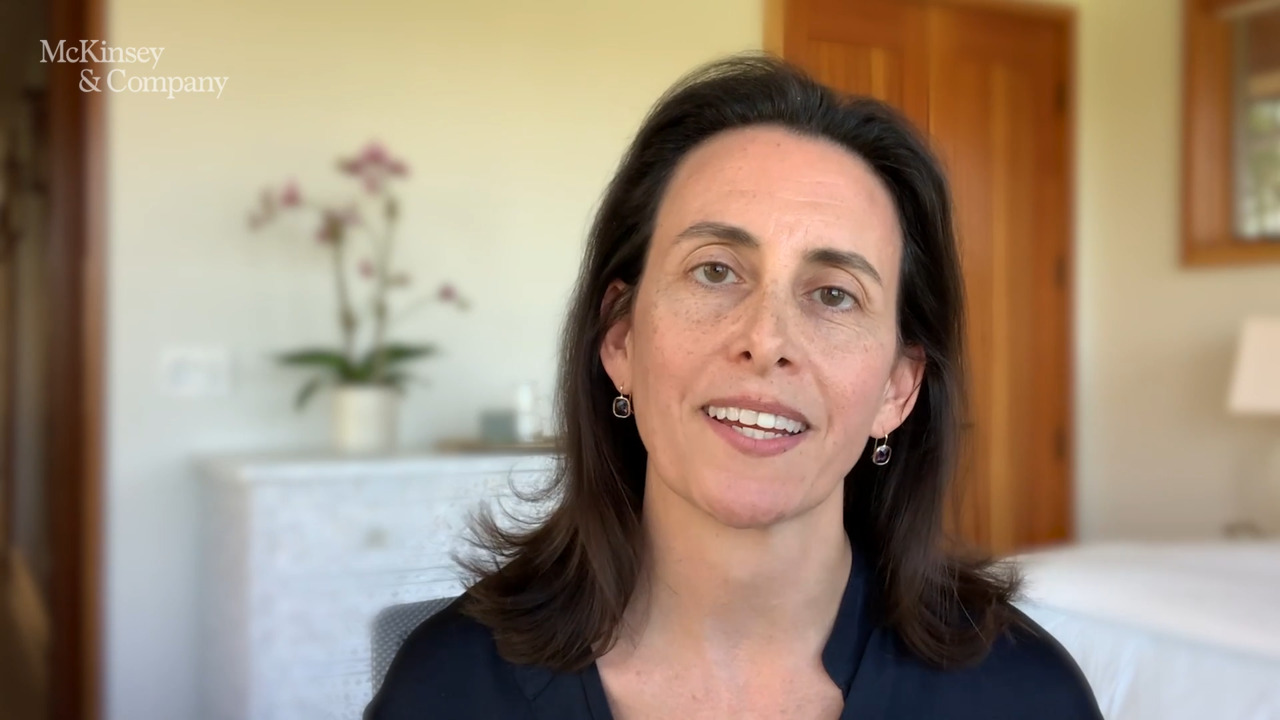









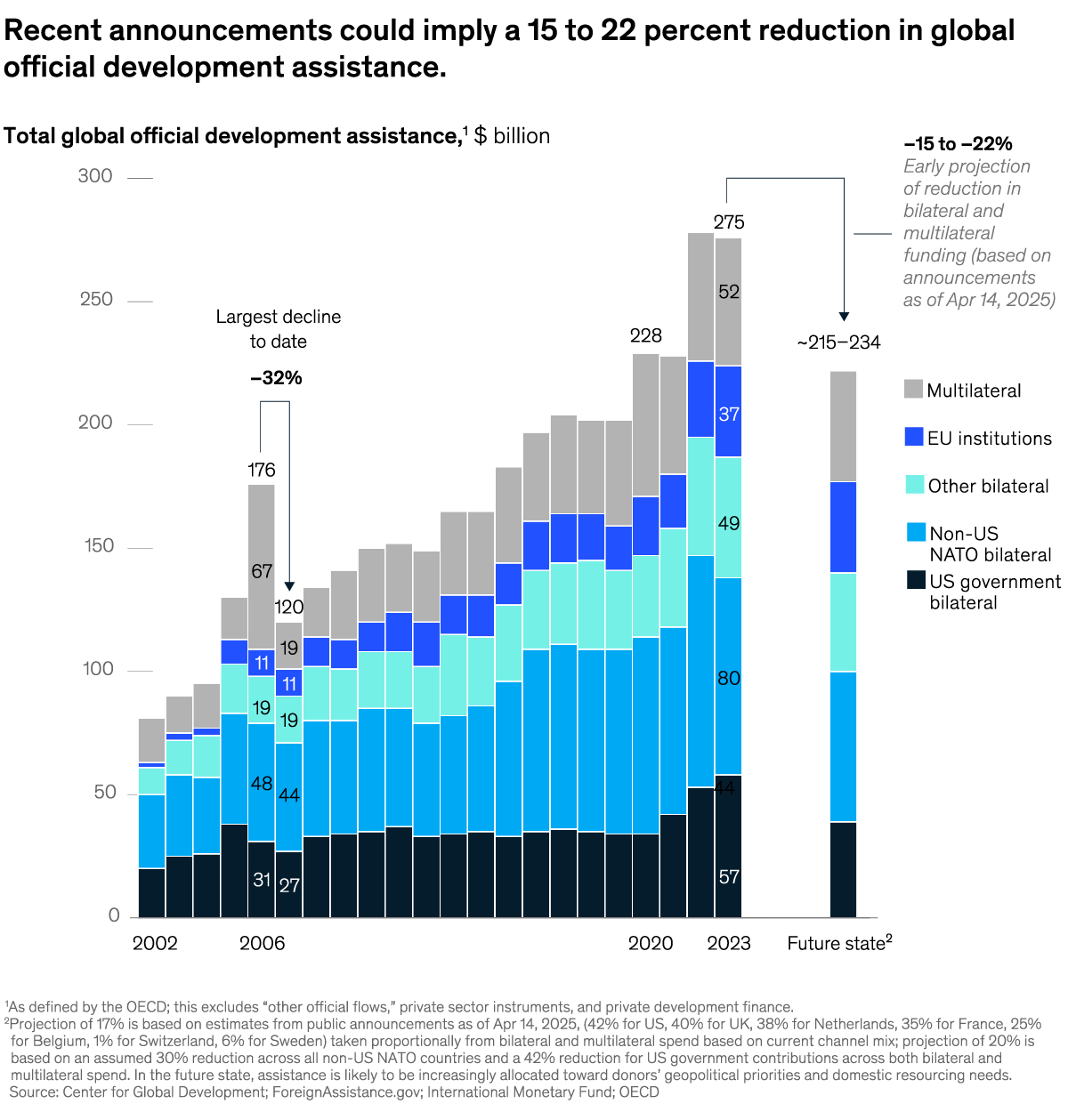


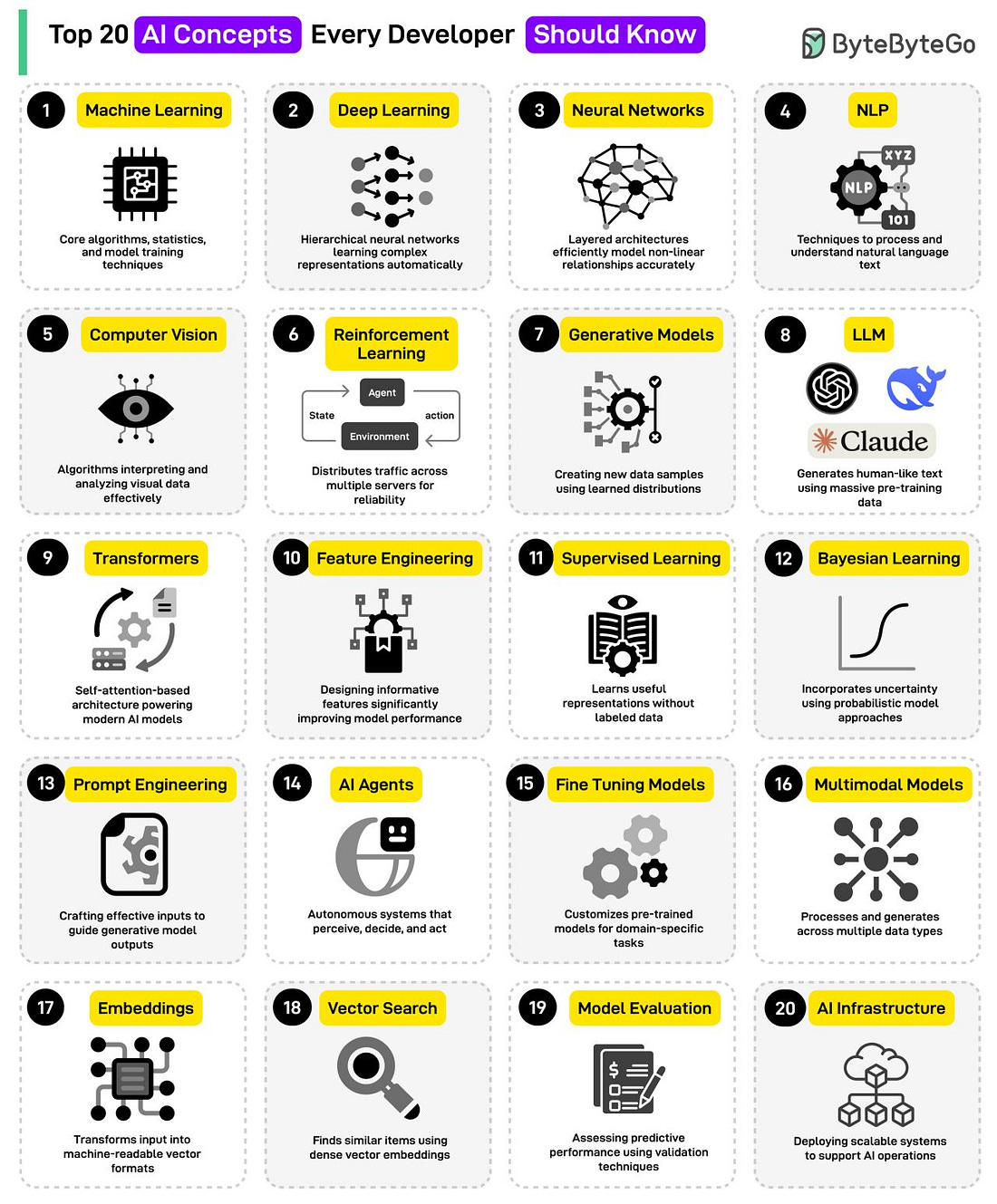
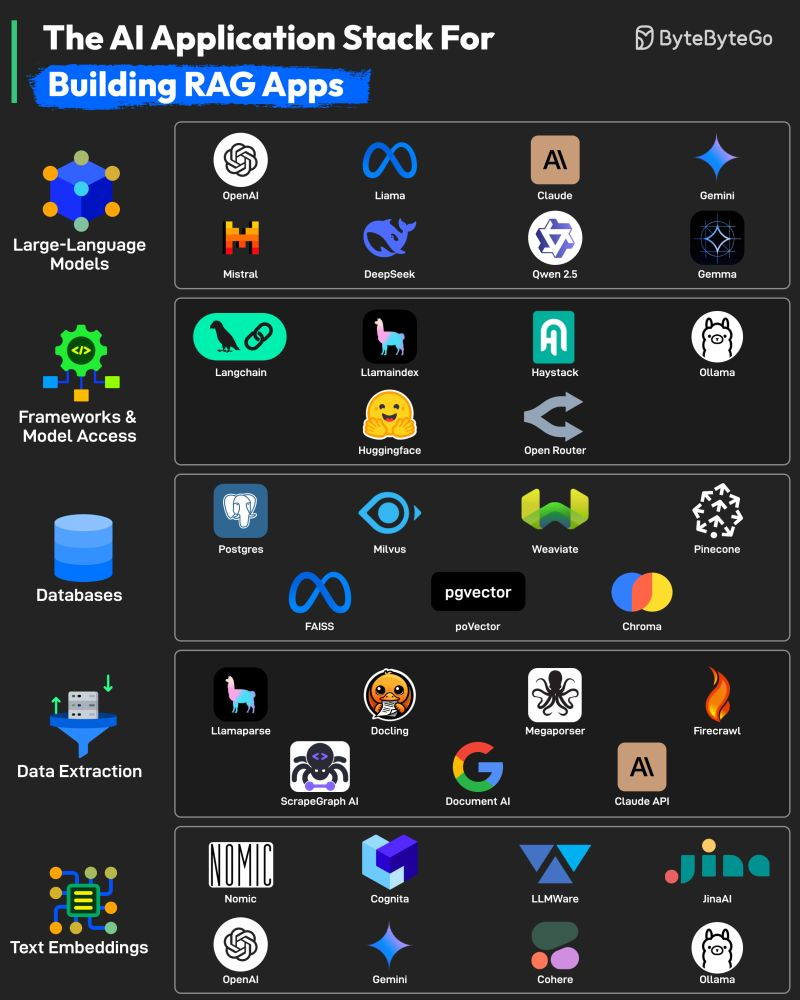
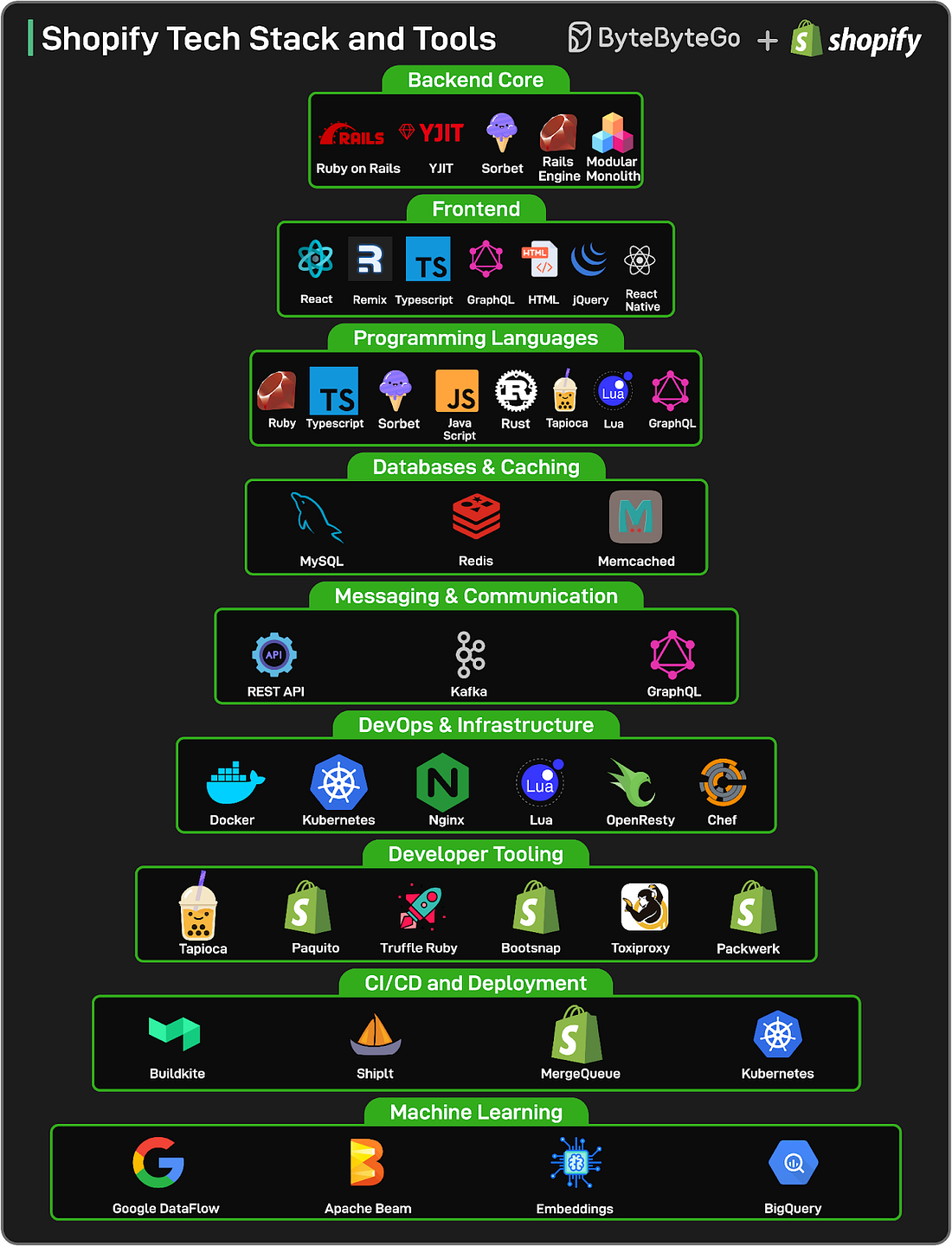
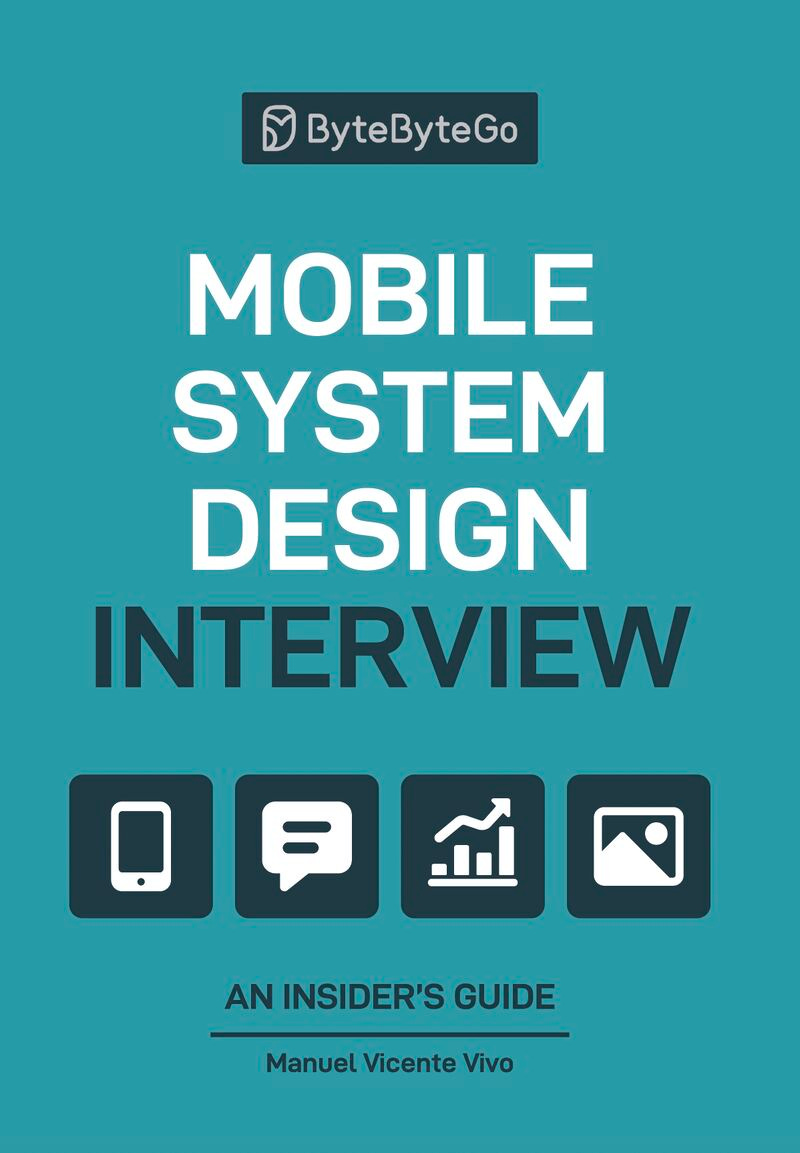




?mw=768&car=16:9)


